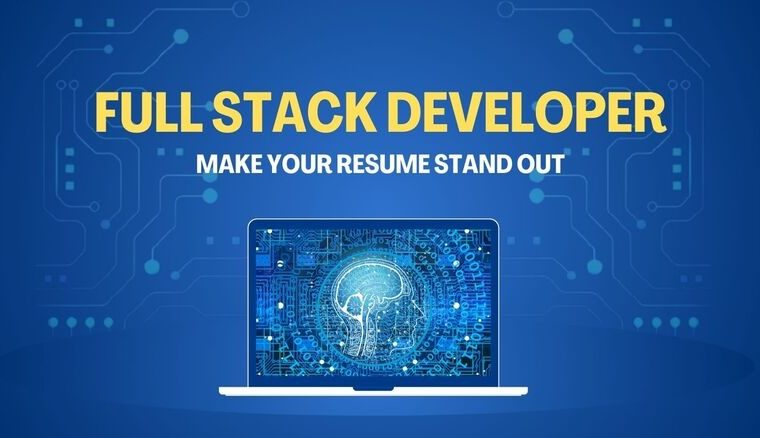As a full stack developer resume, you have a wider range of skills than many others in your field. How well you showcase these skills will determine whether or not you get your dream job. That is why top developers pay so much attention to their resumes and portfolios. Here is a comprehensive guide to creating a winning full stack developer resume.
Resume Best Practices:
To create a great first impression on your potential employers, make sure that your resume is:
-
- Concise: avoid long lines and elaborate paragraphs. Keep the information to the point. Use bullet points, clear headings, and consistent formatting.
-
- Factually correct: double-check all the information in your resume. Pay special attention to the accuracy of your contact details, previous job titles, and employment period.
-
- With action verbs: start your points with assertive verbs like ‘demonstrated’, ‘achieved’, and ‘boosted’.
-
- Customized: avoid using the same resume for all your job applications. Customize your resume to match the job description and the company profile.
-
- Spell-checked: always check your spelling and grammar before sending your application.
-
- Readable: avoid overcrowding your resume. Allow sufficient white space for readability and visual appeal.
Full Stack Developer Resume Essentials
These are the basic information in every full stack developer resume:
-
- Name and contact information: use clear bold font to make this information stand out in your resume. Make sure to add your active phone number and e-mail address.
-
- Educational qualifications: start by listing the recent degrees first and then add the earlier ones. Mention your diplomas, professional certifications, and other relevant qualifications. Here is a program to add weight to this section.
-
- Projects: showcase your past projects including personal projects and those you completed as part of your certification courses. Consider adding your projects to a separate portfolio.
-
- Employment history: list your previous job roles in this section. Mention your latest roles first. Use this space to highlight your achievements in each of these positions.
-
- Awards: Mention your awards and recognitions that are relevant to the job you are applying for.
-
- Skills: mention your skills, both- your hard skills and soft skills. If you want to make your skillset more job-relevant, consider this short-term course.
Making a Winning Full Stack Developer Resume
Recruiters go through hundreds of profiles alongside yours. To make your application stand out from the stack, consider using these tips when building your resume:
-
- Objective: Explain your career goals in a few lines. Mention how your skills and experience align with these aspirations. Keep this information relevant to the job in question.
-
- Quantify your achievements: Give data and numbers to back your achievements. Using quantifiable metrics will quickly demonstrate your impact on projects to recruiters.
-
- Highlight the right skills: Arrange your skillset in order of importance. Do your research to determine which of your skills are enjoying high market demand.
-
- Highlight the most relevant projects: Add emphasis to projects that match the job you are applying for.
-
- Include your portfolio: Pay special attention to planning and building your portfolio. Sometimes, it could be more important than your full stack developer resume in getting you that job. Here are some guidelines for a portfolio that catches the recruiters’ attention:
-
- Design: Focus on keeping your design professional and consistent, even if minimal.
-
- Loading time: Fast loading time will encourage recruiters to explore your portfolio more.
-
- Navigation: Take care to make your portfolio easily navigable. Keep the text for navigation simple and easy to read.
-
- ‘About Me’ section: This section is a chance to showcase your profile more comprehensively. For example, you could discuss the kind of projects you excel in and are interested in.
-
- Projects: To decide which projects go into your portfolio, have a strategy in place. For instance, you might want to showcase projects that reflect the kind of assignments you expect to work on with the recruiters.
-
- Include your portfolio: Pay special attention to planning and building your portfolio. Sometimes, it could be more important than your full stack developer resume in getting you that job. Here are some guidelines for a portfolio that catches the recruiters’ attention:
Learning the tools and techniques of full stack development is only part of the process. For career success, it is essential to know how to build a full stack developer resume that reflects your skills and achievements. Here is a program that teaches you the skills to become an in-demand full stack developer who also has top-notch resume-building skills.



